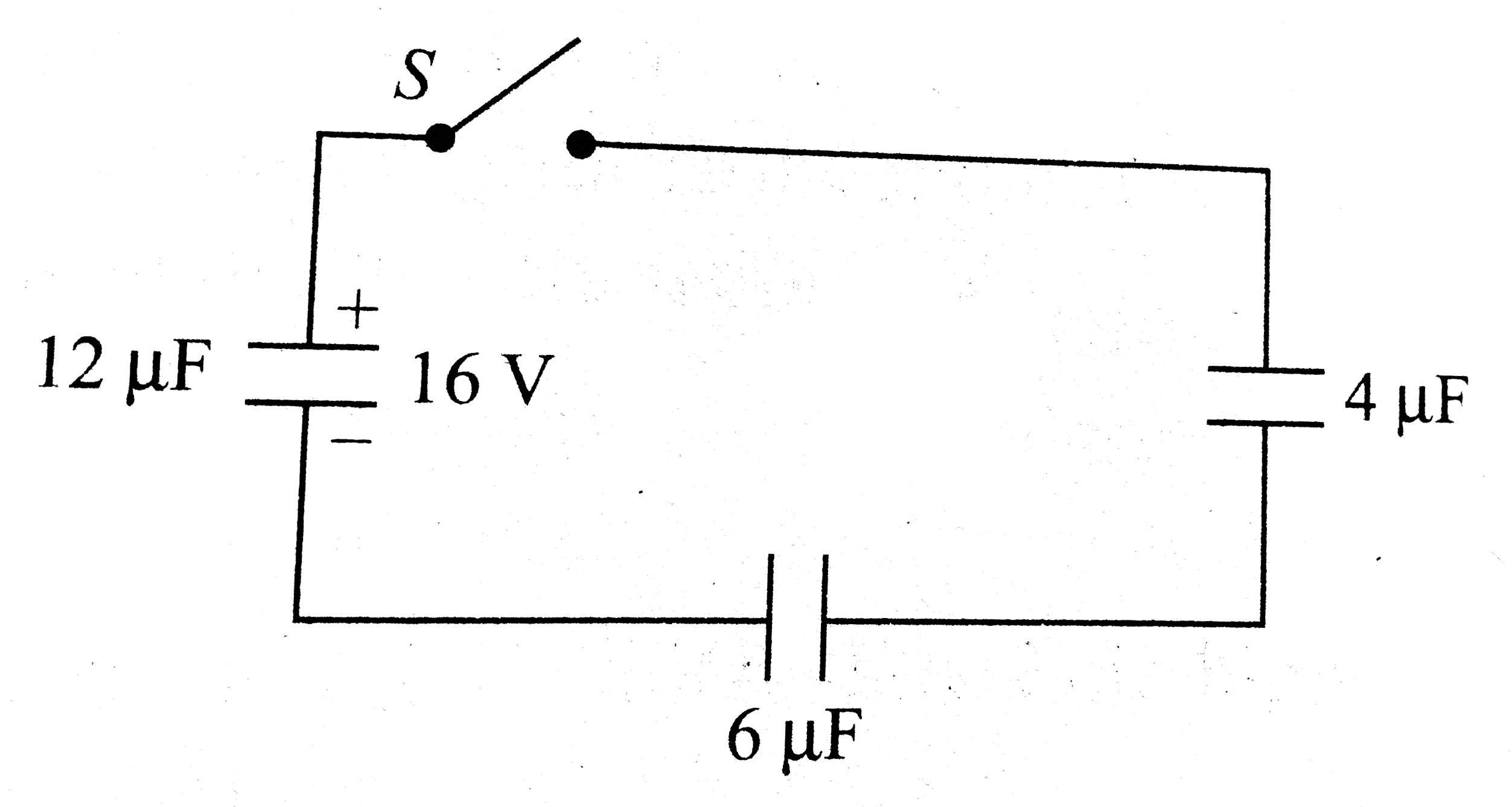A 2μF condenser is charged upto 200 volt and then battery is removed. On combining this with another uncharged condenser in parallel, the potential difference is found to be 40 volt. Find the capacity of second condenser (in μF)
The correct Answer is:8
To solve the problem step by step, we will follow the concepts of capacitors, charge, and voltage.
Step 1: Calculate the initial charge on the first capacitor
The first capacitor has a capacitance of C1=2μF and is charged to a voltage of V1=200V.
The charge Q on a capacitor is given by the formula:
Q=C×V
Substituting the values:
Q1=2μF×200V=400μC
Step 2: Understand the configuration after combining with the second capacitor
After the battery is removed, the charged capacitor is connected in parallel with an uncharged capacitor (let's denote its capacitance as C2). The total charge remains the same, which is Q1=400μC.
Step 3: Determine the final voltage across both capacitors
After connecting the uncharged capacitor, the potential difference across both capacitors is given as Vf=40V.
Step 4: Calculate the charge on the first capacitor after combining
The charge on the first capacitor Q′1 after sharing charge can be calculated using:
Q′1=C1×Vf
Substituting the values:
Q′1=2μF×40V=80μC
Step 5: Calculate the charge on the second capacitor
The charge on the second capacitor Q2 can be found by subtracting the charge on the first capacitor from the total charge:
Q2=Q1−Q′1=400μC−80μC=320μC
Step 6: Relate the charge on the second capacitor to its capacitance
The charge on the second capacitor can also be expressed as:
Q2=C2×Vf
Substituting the known values:
320μC=C2×40V
Step 7: Solve for the capacitance of the second capacitor
Rearranging the equation to find C2:
C2=320μC40V=8μF
Final Answer
The capacitance of the second capacitor is C2=8μF.
---
The first capacitor has a capacitance of C1=2μF and is charged to a voltage of V1=200V.
Q=C×V
Substituting the values:
Q1=2μF×200V=400μC
After the battery is removed, the charged capacitor is connected in parallel with an uncharged capacitor (let's denote its capacitance as C2). The total charge remains the same, which is Q1=400μC.
After connecting the uncharged capacitor, the potential difference across both capacitors is given as Vf=40V.
The charge on the first capacitor Q′1 after sharing charge can be calculated using:
Q′1=C1×Vf
Substituting the values:
Q′1=2μF×40V=80μC
The charge on the second capacitor Q2 can be found by subtracting the charge on the first capacitor from the total charge:
Q2=Q1−Q′1=400μC−80μC=320μC
The charge on the second capacitor can also be expressed as:
Q2=C2×Vf
Substituting the known values:
320μC=C2×40V
Rearranging the equation to find C2:
C2=320μC40V=8μF
The capacitance of the second capacitor is C2=8μF.
Topper's Solved these Questions
Similar Questions
A 2μF condenser is charged upto 200 V and then battery is removed. On combining this with another uncharged condenser in parallel, the potential differences between two plates are found to be 40 V. The capacity of second condenser is
View SolutionA 10μF capacitor is charged to a potential difference of 50V and is connected to another uncharged capacitor in parallel. Now the common potential difference becomes 20 volt. The capacitance of second capacitor is
View SolutionA 10μF capacitor is charged to a potential difference of 50V and is connected to another uncharged capacitor in parallel. Now the common potential difference becomes 20 volt. The capacitance of second capacitor is
View Solution0.2F capacitor is charged to 600V by a battery. On removing the battery it is connected with another parallel plate condenser of 1F. The potential decreases to
View SolutionA condenser of capacitance 10μF has been charged to 100V. It is now connected to another uncharged condenser in parallel. The common potential becomes 40V. The capacitance of another condenser is
View SolutionA 100μF capacitor is charged to a potential difference of 24V. It is connected to an uncharged capacitor of capacitance 20μF What will be the new potential difference across the 100μF capacitor?
View SolutionA capacitor of 60 pF charged to 20 volt. Now battery is removed and then this capacitor is connected to another identical uncharged capacitor. Find heat loss in nJ
View SolutionA capacitor of 60 pF charged to 20 volt. Now battery is removed and then this capacitor is connected to another identical uncharged capacitor. Find heat loss in nJ
View SolutionIn the arrangement shown in , the switch S is find
 the final potential difference across the 4μF capacitor
the final potential difference across the 4μF capacitor
View Solution(i) A 3μF capacitor is charged up to 300 volt and 2μF is charged up to 200 volt. The capacitor are connected so that the plates of same polarity are connected together. The final potential difference between the plates of the capacitor after they are connected is :
View Solution
